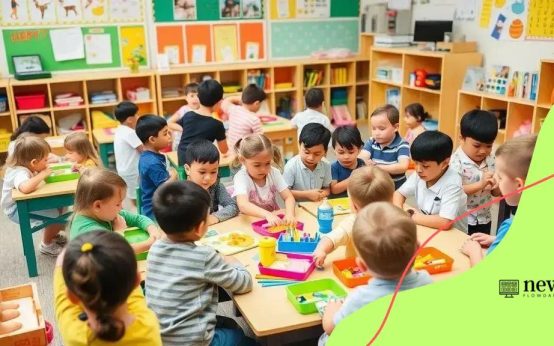The importance of media literacy in the digital age lies in equipping individuals with critical thinking skills to analyze, evaluate, and navigate vast amounts of information effectively, combating misinformation and promoting informed decision-making.
The importance of media literacy in the digital age is more significant than ever, especially as we navigate a world flooded with information. Have you ever wondered how effectively you discern reliable news from fake? Let’s explore the key aspects of media literacy together.
Understanding media literacy
Understanding media literacy is crucial in today’s world, where information is all around us. It empowers individuals to critically evaluate media sources and discern factual from misleading information.
Defining Media Literacy
Media literacy encompasses the ability to access, analyze, and create media in various forms. It allows people to understand the role of media in society and how it influences opinions and behaviors.
Key Components of Media Literacy
When we think about media literacy, several vital elements come into play:
- Critical thinking skills to evaluate sources and messages.
- Awareness of media influence on perception and behavior.
- Understanding different types of media and their purposes.
These components work together to help individuals navigate the complex media landscape effectively. With the rise of digital platforms, information spread can be rapid, making it essential to be informed.
Importance of Media Literacy Education
Educational programs that promote media literacy can significantly enhance critical thinking skills. These lessons help individuals recognize biases in media, whether from news outlets, social media, or advertising.
Providing students with the tools to evaluate information gives them the autonomy to make informed decisions. This can lead to a more aware and engaged citizenry.
In addition to formal education, discussions around media literacy at home and in the community can also reinforce these skills. Encouraging people to ask questions about what they see can foster a culture of inquiry and evaluation.
The impact of social media on information consumption
The impact of social media on information consumption is profound and far-reaching. Today, platforms like Facebook, Twitter, and Instagram are our primary sources for news. This shift has changed how we receive, process, and share information.
Changing the Landscape of News
Traditionally, news traveled through newspapers and television. Now, social media has transformed this landscape. Users have the power to share stories with just a click. This accessibility has made the news more immediate.
As a result, we consume information differently, often prioritizing speed over accuracy. People may skim headlines rather than read full articles, leading to a superficial understanding of complex issues.
Influence of Algorithms on Content
Social media platforms use algorithms to tailor what users see. These algorithms are designed to boost engagement. They show us content similar to what we have liked in the past, which can create echo chambers.
- People see more of the same ideas.
- It’s harder to encounter differing viewpoints.
- This can reinforce existing beliefs rather than challenge them.
Understanding this can help users become more aware of their media consumption habits. Engaging with a variety of sources is crucial to building a well-rounded perspective.
Moreover, misinformation spreads quickly on social media. Users may encounter fake news or misleading headlines without proper verification. This makes media literacy essential for discerning credible sources.
Strategies for Responsible Consumption
To mitigate these issues, users can adopt several strategies. First, check multiple sources before believing a story. Secondly, be wary of sensational headlines that seem too outrageous.
Lastly, use fact-checking websites to verify information when uncertain. These practices can encourage a healthier approach toward consuming news in a digital age dominated by social media.
Practical skills for evaluating sources

Practical skills for evaluating sources are essential in today’s information-rich environment. With so many voices online, it’s crucial to discern which sources are trustworthy and credible.
Understanding Credibility
Credibility refers to how reliable and trustworthy a source is. When evaluating sources, ask yourself: Who created this content? What is their expertise? This simple approach lays the groundwork for informed consumption.
Check the author’s qualifications to establish their authority on the subject. A well-researched article often stems from someone with relevant experience or education in that area.
Assessing Source Quality
Not all sources are created equal. Assessing quality is necessary to avoid misinformation. Here are some key factors to consider:
- Look for reputable publishers—well-known news organizations or academic institutions.
- Check for citations and references to support claims.
- Examine the date of publication; recent information is often more relevant.
A critical eye will illuminate the differences between high-quality sources and those that may mislead or provide incorrect information. Additionally, consider the purpose of the content. Is it meant to inform, entertain, persuade, or sell something?
Fact-Checking Resources
Various fact-checking websites can aid in evaluating claims. These resources are designed to verify the accuracy of the information. Popular fact-checking sites include:
- Snopes
- FactCheck.org
- PolitiFact
Using these sites can help clarify if a story is true or false, ensuring you have accurate information.
Finally, using multiple sources to cross-reference information will strengthen your understanding and provide a broader perspective on the topic. By combining these skills, you’ll sharpen your ability to navigate the complex media landscape effectively.
The role of education in promoting media literacy
The role of education in promoting media literacy is vital in today’s digital landscape. Schools and educators must equip students with the skills needed to navigate information responsibly.
Integrating Media Literacy into the Curriculum
One effective way to promote media literacy is by integrating it into existing subjects. Teachers can help students analyze news articles in social studies or evaluate advertisements in language arts. This approach not only enhances critical thinking but also makes learning relevant.
Students can learn to identify bias and persuasion techniques in media. Early exposure prepares them for the complex media environment they will face as adults.
Professional Development for Educators
Teachers also need training to effectively teach media literacy. Professional development programs can offer resources and strategies for integrating media literacy concepts into their lessons.
When teachers feel confident in their own media literacy skills, they can pass those abilities onto their students.
Creating a Collaborative Learning Environment
Encouraging collaboration among students enhances their learning experience. Group projects on analyzing different media sources can foster discussion and help students challenge each other’s viewpoints.
- Student-led discussions can lead to deeper understanding.
- Peer feedback promotes critical evaluation skills.
- Participating in debates sharpens argumentation skills.
This dynamic learning environment reinforces the importance of various perspectives and hones critical thinking abilities essential for navigating today’s information world.
Moreover, encouraging families to engage in discussions about media can extend this learning beyond the classroom. Schools can host workshops or provide resources to help families talk about media consumption at home, creating a culture of media literacy that lasts a lifetime.
Fostering critical thinking in digital spaces
Fostering critical thinking in digital spaces is essential as we navigate an online world filled with information. Developing these skills empowers individuals to analyze and evaluate content before accepting it as true.
The Importance of Critical Thinking
Critical thinking helps us question information rather than just accept it. In digital spaces, where misinformation can spread quickly, using a skeptical lens becomes crucial.
Understanding the source of information—who created it and why—is a key part of this process. This habit encourages users to seek evidence and think deeply about the content they encounter.
Strategies for Developing Critical Thinking
There are effective strategies to enhance critical thinking skills in digital environments:
- Teach students to ask questions about the content they see, such as: What is the author’s purpose? Is this information backed by data?
- Encourage discussions about various perspectives on the same issue. This not only broadens their understanding but also challenges initial assumptions.
- Utilize real-world examples of misinformation to illustrate the importance of verification and analysis.
Another effective method is engaging in online debates. This cultivates the ability to present arguments and counterarguments based on credible information. By considering multiple viewpoints, individuals sharpen their analytical skills.
Creating a Supportive Environment
Teachers and parents can create environments that value questioning and exploration. Encouraging open dialogue about digital content fosters a culture of critical engagement.
This makes individuals more active participants in the conversation, improving their ability to discern truths from falsehoods. It also allows people to feel more confident in challenging misleading narratives.
Moreover, integrating digital literacy activities in classrooms and discussions at home can promote sustained critical thinking practices. Sharing articles, analyzing social media posts, or even discussing viral videos can serve as excellent teaching moments.
FAQ – Common Questions about Media Literacy in the Digital Age
What is media literacy?
Media literacy is the ability to access, analyze, and evaluate information from various media sources critically.
Why is critical thinking important for media consumption?
Critical thinking helps individuals question the credibility of sources and discern fact from misinformation.
How can educators promote media literacy?
Educators can integrate media literacy into the curriculum, focusing on source evaluation and critical analysis.
What role do parents play in fostering media literacy?
Parents can support media literacy by encouraging discussions about media content and promoting critical evaluation of information.


 EarlyEducationPush: Unlocking the Potential of Young Minds
EarlyEducationPush: Unlocking the Potential of Young Minds  CollegeAccessPlans: Unlocking educational opportunities for all
CollegeAccessPlans: Unlocking educational opportunities for all  FAFSA Changes 2025: What You Need to Know
FAFSA Changes 2025: What You Need to Know